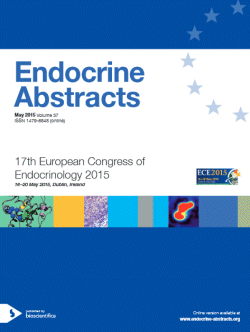Oral Communications
Thyroid
ea0037oc6.1 | Thyroid | ECE2015
3,5-T2 might play a crucial role in the rodent heart
Lietzow Julika , Dhandapani Priyavathi , Jonas Wenke , Kohrle Josef
ea0037oc6.2 | Thyroid | ECE2015
Biological activity of novel thyroid hormone analogues: role of Na+ taurocholate cotransporting polypeptide in liver selectivity
Brigante Giulia , Carlsson Bo , Kersseboom Simone , Peeters Robin P , Visser Theo J
ea0037oc6.3 | Thyroid | ECE2015
Different TSH suppressive effects of liothyronine combination according to Thr92Ala type 2 deiodinase polymorphism
Shin Dong Yeob , Kim Kwang Joon , An Jiyean , Lee Eun Jig
ea0037oc6.4 | Thyroid | ECE2015
The usefulness of determining the presence of BRAF (V600E) mutation in fine needle aspiration cytology of thyroid nodules cells
Kowalska Aldona , Kopczynski Janusz , Kowalik Artur , Gasior-Perczak Danuta , Palyga Iwona , Lizis-Kolus Katarzyna , Waligorski Dariusz , Szyska-Skrobot Dorta , Walczyk Agnieszka , Hurej Stefan , Chil Agnieszka , Chodurska Renata , Chlopek Malgorzata , Wypiorkiewicz Elzbieta , Nowak Ewelina , Gozdz Stanislaw
ea0037oc6.5 | Thyroid | ECE2015
Search for new candidate genes in RET mutation-negative families with hereditary medullary thyroid carcinoma using next generation sequencing
Vaclavikova Eliska , Dvorakova Sarka , Sykorova Vlasta , Vcelak Josef , Halkova Tereza , Vlcek Petr , Bendlova Bela




